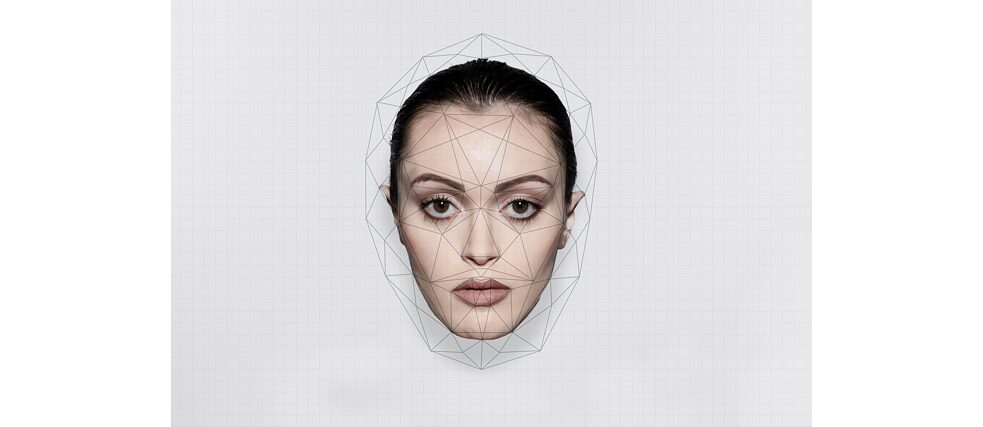Feminism Online Digital Space and an Intersectional Feminist Future

The internet as we know it is shaped by algorithms based on a patriarchal and (neo-)colonial value system. Our author Francesca Schmidt argues in favour of feminist intervention to make society more equitable both on and offline.
As a process of transformation, digitisation is reshaping our society. Options for possible futures are being played out on the internet. The metaverse in one such possible future currently under very intense discussion and being implemented by Facebook. It presents a digital world in which we are even more closely networked via different technologies.
It is important that these visions of the future are not shaped just by white, patriarchal, heteronormative structures of the past. But exactly this past has already been transferred into technology in the form of data sets and value systems. The future being imagined on the internet is the idea of automation and endless accumulation that continues to rely on exploitation and (neo-)colonial structures and seems to have few alternatives. Kate Crawford describes this very well in her book Atlas of AI, in which she shows the costs of automation processes. These range from the exploitation of natural resources to the fostering of undemocratic states.
The web is therefore an essential tool for advocating for intersectional feminist – meaning a feminism that is aware of the intersection and simultaneity of different categories of discrimination – and emancipatory social designs. Both structural and substantive issues should be highlighted as part of this process. From an intersectional feminist perspective, various forms of discrimination exist simultaneously on – but not only on – the internet and overlap in parts. “Gender” and “race” are the basic, though not the only, structural elements. An intersectional feminist perspective makes it possible to render these intersections visible and place them in context.
![]() Future options are played out on the internet, for example in the Metaverse: Metaverse avatars in their virtual world.
| Photo (detail): © Adobe
Future options are played out on the internet, for example in the Metaverse: Metaverse avatars in their virtual world.
| Photo (detail): © Adobe
Access to the Internet
Access to the internet is especially relevant from a political-regulatory and democratic perspective, both to the structure as a whole and to individual content. Feminist network policy is one possible form of intervention.
Access to the internet as a structure is just as influenced by power and subject to barriers as the analogue public space. Where someone lives, for example, plays a relevant role all too often: While urban regions in Germany generally have good to very good access to fast internet, out in the more rural areas accessing a website or downloading files from the cloud often takes just as long as it did 20 years ago. It is almost like being transported back to a time when the internet still shrieked as it loudly established a data connection via a modem. Access must therefore be structurally barrier-free regardless of where a person lives, for example.
The resources for the necessary hardware are also unevenly distributed. Even before the pandemic, female employees were often much less well equipped to work from home than their male colleagues. The gender pay gap, in Germany still 18 percent less for women, does the rest. Unfortunately, little research has been done on the migration pay gap, but initial studies suggest that the experience of migration – or migrantization – and racialization are also relevant factors in wage inequalities. This has direct implications for access to the internet. After all, as more resources become available, digital tools – such as better hardware and higher data volumes – can be used more easily and efficiently. These digital options are also becoming increasingly relevant for democratic participation.
Using and Shaping Content
But intersectional feminist perspectives are not just relevant to questions of access to the internet as a structure. They are also essential to how content can be shaped and ultimately used. On the one hand, the internet has eliminated the strict division between the private and the public – although from a feminist perspective, the private has always been political and thus also public – which initially contributed to a diversification of media and perspectives. Previously marginalized knowledge, such as critical perspectives on racism, feminism, and intersectionality, have become more visible. On the other hand, though, the extent of digital violence that has resulted also reveals another effect: that precisely this opening of the discourse space has led to a shift in what can be said and thus even entrenched discriminatory structures.
The public sphere, which seemed very disparate at first, has grown quite limited again due to the increasing gatekeeper function of large internet companies, many headquartered in the USA. Google’s algorithm decides which search results appear on the first pages. Facebook favours posts with a particularly high number of interactions, while on TikTok certain videos and comments are not shown to users or are deleted, depending on the country. On Russian TikTok, for example, the war in Ukraine simply does not exist, and in Germany comments that include terms such as “homophobic,” “LGBTQ,” “Auschwitz,” “National Socialism,” “sex” and “porn” have been suppressed.
Despite all this – or perhaps because of it – feminist interventions remain essential. One key element is ensuring that content of all kinds continues to be created and published, from hashtag campaigns and artistic interpretations of discrimination to videos or articles on pressing social issues. This is precisely the kind of content that often ultimately pushes protest back onto the streets and so contributes to political and social change. Intersectional feminist perspectives are also essential when programming tools for the internet or digital transformation in general. Developer teams must be characterized by a multiplicity of perspectives. It is not enough for team members to be able to code – they should also critically consider how technology impacts society.
Because technology is never neutral. If power and hierarchy structures are not considered during development, the resulting technology further normalizes them, shaping a future based on exclusion. Take, for example, the technology developed to automatically recognise faces, though not Black faces, as research has made clear. When we look at such technologies, we need to ask some fundamental questions: What are its implications for people affected by (racialized) discrimination? What racialized surveillance structures are we discursively perpetuating by using these technologies? US Black scholar Simone Browne has clearly detailed these continuities in her book Dark Matters: On the Surveillance of Blackness.
 Automatic facial recognition has been possible for a while now: What impact do such technologies have on people who are affected by discrimination?
| Photo: © picture alliance/Westend61/Emma Innocenti
Automatic facial recognition has been possible for a while now: What impact do such technologies have on people who are affected by discrimination?
| Photo: © picture alliance/Westend61/Emma Innocenti
Paths Towards Intersectional Feminist Visions of the Future
The digital transformation can not only help us imagine an intersectional feminist future; it can also help us pave the way for one. Not all on its own, of course, but through the fundamental (social) processes of change it is currently triggering. The points mentioned above can contribute to creating a more equal society – by facilitating access to the internet as a structure, developing technologies that are more socially responsible, and making content more diverse.
It is important to move away from the idea that technology can solve all our social problems – whether it involves genetic engineering for agriculture or upload filters meant to protect copyrights on the one hand and prevent digital violence, especially as images, on the other. We must continue to question how technologies are being used. These should only be used if the consequences of a technology have been assessed and if they have emancipatory potential, i.e. if they contribute to a more equal society. (Western) society must break away from an understanding of progress geared only toward and focused on white, patriarchal structures. We have to look instead to shifting our focus to hitherto marginalized positions as well and not only learning from their knowledge, but also using it as a starting point.
0 0 Comments